By Will Levenson, July 10 2013
My bar for summer livability was set high when I moved to Boise, Idaho, after graduating 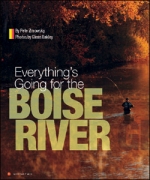 from college. The Boise River, which flows through the middle of town, is the lifeblood of the city. Locals not only kayak, inner-tube and fish the river, they also swim in it. And the City of Boise, recognizing the energy and value that this beloved river provides its citizenry, has made major efforts to cultivate its greatness, even opening a whitewater park north of downtown earlier this spring.
from college. The Boise River, which flows through the middle of town, is the lifeblood of the city. Locals not only kayak, inner-tube and fish the river, they also swim in it. And the City of Boise, recognizing the energy and value that this beloved river provides its citizenry, has made major efforts to cultivate its greatness, even opening a whitewater park north of downtown earlier this spring.
After three years in the City of Trees, I moved to Portland for a job. In 1998, Portland was gaining national attention for its “green,” fresh-thinking culture. Yet almost upon arrival, I was put on notice that “nobody swims in the Willamette…it is a toilet...a superfund site.”
My reaction was outrage, then disappointment. It made no sense that a city billed as the “greenest city in the U.S.” had a polluted river running through the center of town. And 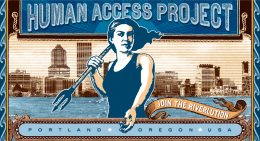 I found it baffling that people simply made jokes, doing little to change it. I realized that naively, I had both overestimated Portland and underestimated Boise. Even today, after fifteen years in Portland, I think of Boise as the Paris of metropolitan river park systems. I am, however, heartened by a swell of activism that promises to transform our own urban river culture.
I found it baffling that people simply made jokes, doing little to change it. I realized that naively, I had both overestimated Portland and underestimated Boise. Even today, after fifteen years in Portland, I think of Boise as the Paris of metropolitan river park systems. I am, however, heartened by a swell of activism that promises to transform our own urban river culture.
In November 2011, the City of Portland completed a $1.44 billion, 20-year project, 100% funded by ratepayers, called The Big Pipe. Many in Portland have heard about The Big Pipe, and many of these people know that it’s now complete. However, too few understand how successful this engineering marvel has been, and what this success could mean for all of us.
Very simply, The Big Pipe was created to control sewage overflows into the Willamette 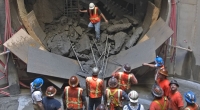 River. Before The Big Pipe project was complete it would only take 1/10 of an inch of rain to cause raw sewage to overflow into the Willamette River. Historically, this disgusting occurrence would occur 100 times -- or more -- every year, so after completion in 2011, it didn’t take very long for The Big Pipe to be tested. And yet last March, the wettest in recorded city history, we experienced not one sewage overflow the entire month. Passing this test, it’s likely that Portland may not ever again experience a summertime sewage overflow in the Willamette River.
River. Before The Big Pipe project was complete it would only take 1/10 of an inch of rain to cause raw sewage to overflow into the Willamette River. Historically, this disgusting occurrence would occur 100 times -- or more -- every year, so after completion in 2011, it didn’t take very long for The Big Pipe to be tested. And yet last March, the wettest in recorded city history, we experienced not one sewage overflow the entire month. Passing this test, it’s likely that Portland may not ever again experience a summertime sewage overflow in the Willamette River.
The significance of this? That it’s safe to swim in the Willamette River! Whether a Portland 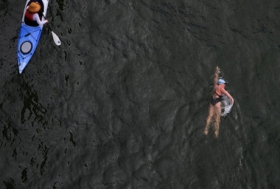 native, or a transplant, like me, you may find this hard to believe. Therefore, I encourage you to do some simple research and develop your own opinion. Don’t just accept carte blanche the words of someone who told you our river was polluted when you moved here. Or, for Portland natives, I challenge you to consider the notion that we the people can change a river. We can reclaim it, restore it, and develop it wisely for recreational use. The Willamette is not the same river it was 20 years ago.
native, or a transplant, like me, you may find this hard to believe. Therefore, I encourage you to do some simple research and develop your own opinion. Don’t just accept carte blanche the words of someone who told you our river was polluted when you moved here. Or, for Portland natives, I challenge you to consider the notion that we the people can change a river. We can reclaim it, restore it, and develop it wisely for recreational use. The Willamette is not the same river it was 20 years ago.
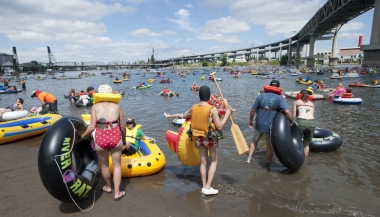 In Portland, enjoying our short but sublime summer is something we embrace with an artist’s intensity. But for too long, those summers have been missing one elemental ingredient. Something right under our toes can transform our city forever, make Portland the world class city we all want it to be, and exponentially increase our quality of life. That’s right, the Willamette River. So, grab some friends and go take a dip. We paid a lot of money to clean up the Willamette, and now it’s time to collect our river dividend.
In Portland, enjoying our short but sublime summer is something we embrace with an artist’s intensity. But for too long, those summers have been missing one elemental ingredient. Something right under our toes can transform our city forever, make Portland the world class city we all want it to be, and exponentially increase our quality of life. That’s right, the Willamette River. So, grab some friends and go take a dip. We paid a lot of money to clean up the Willamette, and now it’s time to collect our river dividend.

 Will Levenson is co-owner of
Will Levenson is co-owner of
Add new comment